
MS Excel 2011 for Mac: Change the font color based on the value in the cell
This Excel tutorial explains how to use conditional formatting to change the font color based on the value of a cell in Excel 2011 for Mac (with screenshots and step-by-step instructions).
See solution in other versions of Excel:
Question: In Microsoft Excel 2011 for Mac, I'm putting the sum of 3 cells in a 4th cell. If the sum is greater than 10, I would like the sum to be the color red. If the sum is less than 10, I would like the sum to be the color blue. Is this possible?
Answer: If you wish to change the color of the font based on the value in a cell, you will need to apply conditional formatting.
To do this, select the cell that you wish to apply the formatting to. In this example, we've selected cell B8.
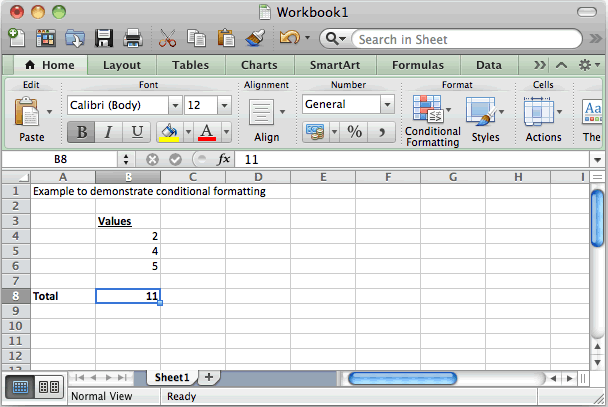
Select the Home tab in the toolbar at the top of the screen. Then click on the Conditional Formatting drop-down and select Manage Rules.
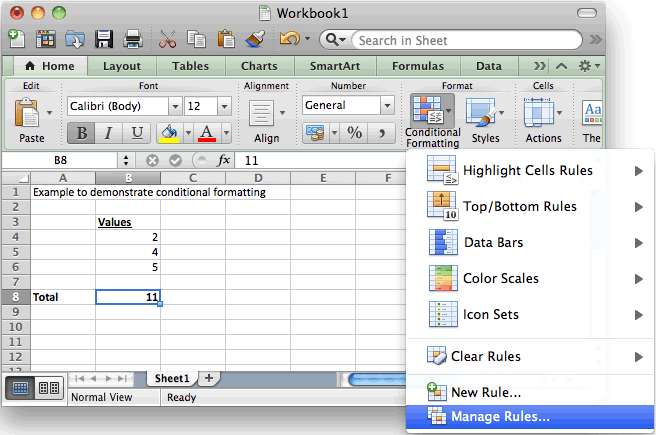
When the Conditional Formatting Rules Manager window appears, click on the + button in the bottom left of the window to enter the first condition.
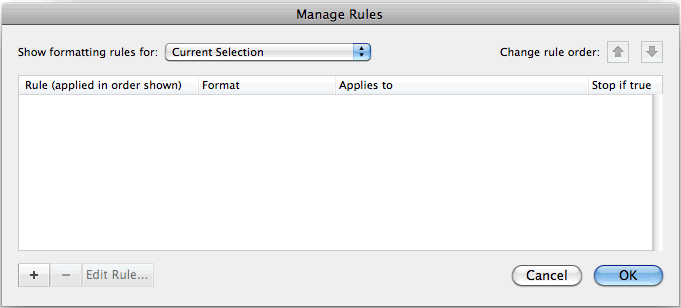
When the New Formatting Rule window appears, select Classic as the Style drop down.
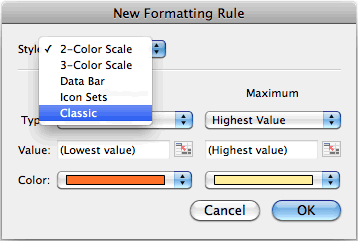
Then select Format only cells that contain in the second drop down, Cell value in the third drop down, greater than in the fourth drop down, and enter 10 in the final box. In our example, we've selected when the cell value is greater than 10.
Next, we need to select what formatting to apply when this condition is met. To do this, select "custom format..." in the Format with drop down.
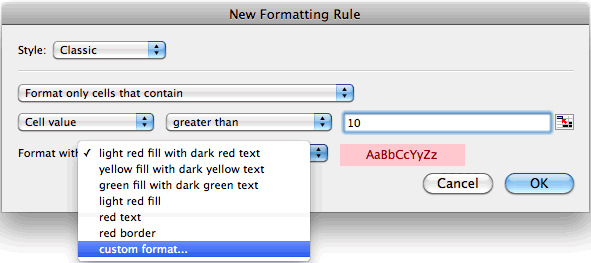
When the Format Cells window appears, select the formatting conditions that you wish to apply. We've changed the Color to Red in the Font tab and selected "No Fill" under the Fill tab. Then click on the OK button.
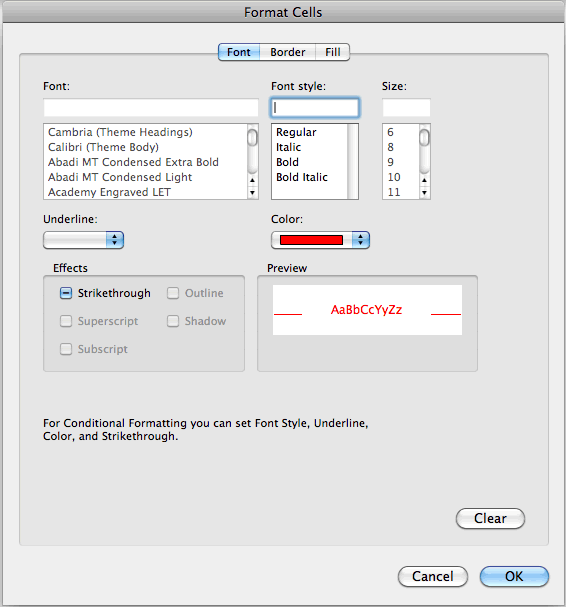
When you return to the New Formatting Rule window, you should see the preview of the formatting in the Preview box. In this example, the preview box shows the text in red. Next click on the OK button.
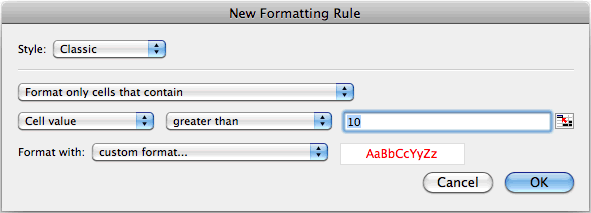
This will return you to the Conditional Formatting Rules Manager window.
If you wish to apply more than one condition, you will need to click on the + button again.
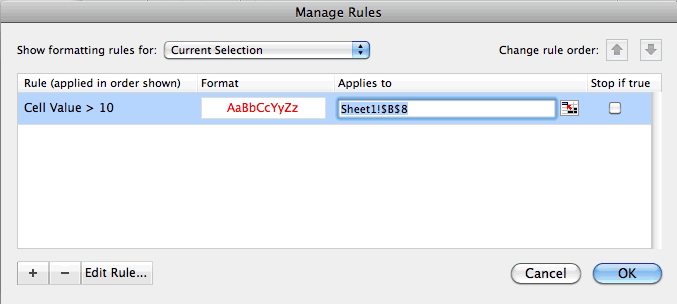
When the New Formatting Rule window appears, we need to set up the second condition.
Select Classic as the Style drop down. Then select Format only cells that contain in the second drop down, Cell value in the third drop down, less than in the fourth drop down, and enter 10 in the final box. In our example, we've selected when the cell value is less than 10.
Next, we need to select what formatting to apply when this condition is met. To do this, select "custom format..." in the Format with drop down.
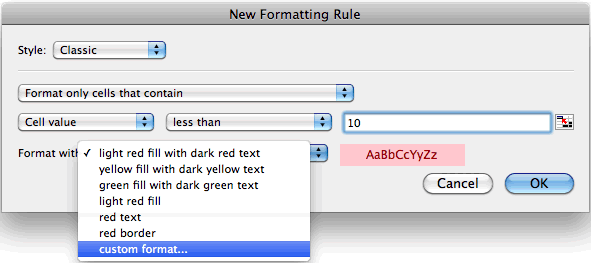
When the Format Cells window appears, select the formatting conditions that you wish to apply to the second condition. We've changed the Color to Blue in the Font tab and No Fill in the Fill tab. Then click on the OK button.
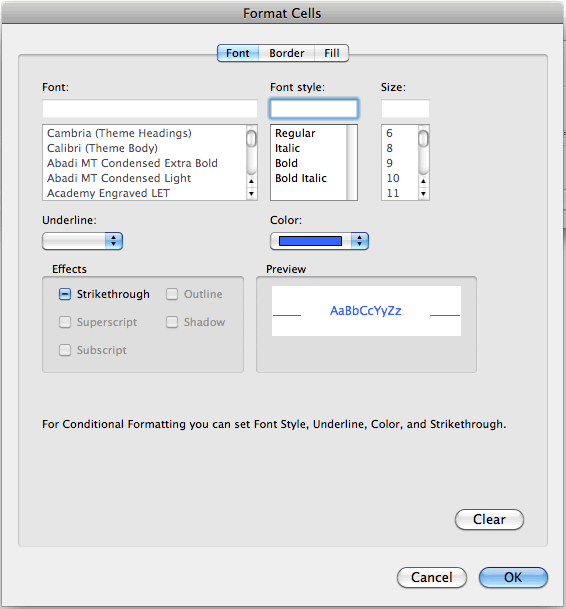
When you return to the New Formatting Rule window, you should see the preview of the formatting in the Preview box. In this example, the preview shows the text in blue. Next click on the OK button.
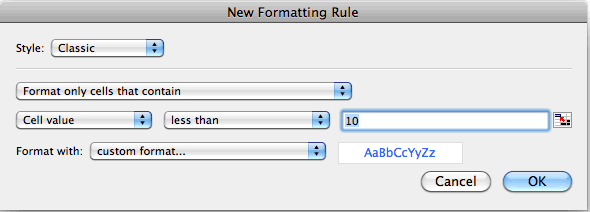
We've added two different conditions. When you're done, click on the OK button.
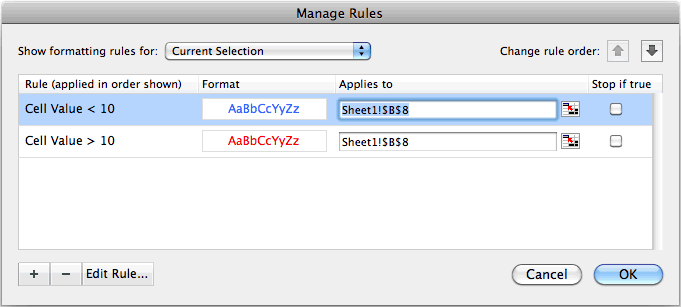
Now when you return to the spreadsheet, the conditional formatting will be applied. As you can see, the value in cell B8 appears in red.
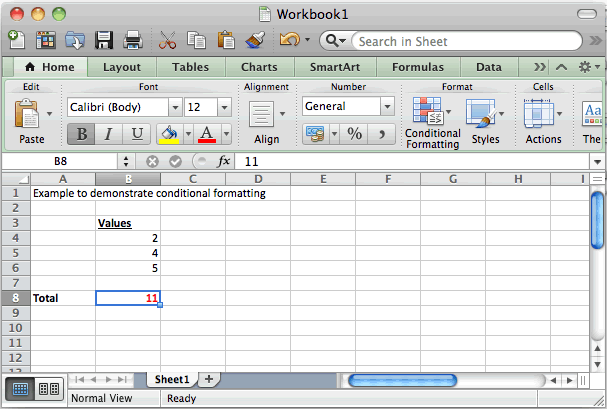
Advertisements


